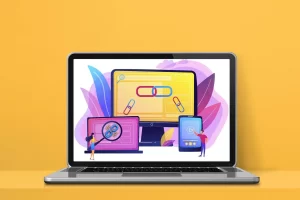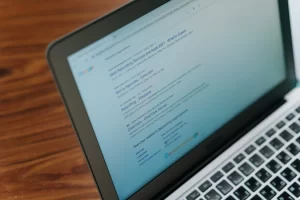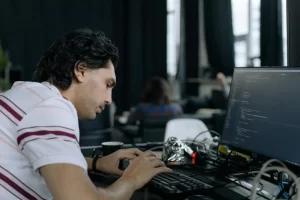Google penalties can be disastrous for any website, as they can significantly impact search engine rankings and, ultimately, the success of a business. A Google penalty negatively impacts a website’s search engine rankings, resulting from violating Google’s guidelines or algorithm updates.
The impact of a Google penalty can range from a slight decrease in rankings to a complete removal of the website from Google search results. Therefore, it is essential to understand how to recover from a Google penalty and improve your SEO.
In this blog post, we will provide a comprehensive guide on recovering from a Google penalty and improving your SEO. We will discuss the different types of Google penalties, how to determine if you have been hit with a penalty and the possible reasons why you’ve been penalised.
We will also provide steps on how to assess the damage, take immediate action, and fix the problems that caused the penalty. Furthermore, we will discuss how to write an effective reconsideration request and provide best practices for on-page and off-page optimisation to improve your SEO.
Let’s get started!
What is a Google Penalty?
Before you can start your recovery process, it is essential to understand what a Google penalty is and how it works.
A Google penalty negatively impacts a website’s search engine rankings, resulting from violating Google’s guidelines or algorithm updates. There are two types of Google penalties, manual and algorithmic.
Manual Penalties
Google manual penalties are actions taken by Google’s search quality team to penalise websites that violate Google’s Webmaster Guidelines. These penalties are manually applied by Google employees rather than algorithmically, which means that a human reviewer has determined that a website has violated Google’s guidelines and deserves to be penalised.
Manual penalties are typically more severe than algorithmic ones because they are applied when a website deliberately violates Google’s guidelines. Some common reasons for manual penalties include spammy or manipulative link building, keyword stuffing, hidden text or links, thin content, and other tactics to manipulate search engine rankings.
When a website is hit with a manual penalty, Google will typically notify the website owner via their Google Search Console account and provide some details about the specific violation and the steps that need to be taken to resolve the issue.
Algorithmic Penalties
Google algorithmic penalties are automated actions Google algorithms take to penalise websites that violate Google’s Webmaster Guidelines. These penalties are triggered when Google’s algorithms detect that a website has engaged in practices that are considered to be against Google’s guidelines and best practices for SEO.
Algorithmic penalties can be caused by factors such as keyword stuffing, duplicate content, low-quality backlinks, and other issues that can negatively impact the user experience. These penalties can be applied to specific pages or sections of a website or the entire site.
Unlike manual penalties, which are applied manually by Google’s search quality team, algorithmic penalties are applied automatically by Google’s algorithms. This means that website owners may not receive a notification when an algorithmic penalty is applied and may not be aware of it until they notice a sudden drop in search engine rankings or traffic.
How to Assess the Damage Caused by a Google Penalty?
After identifying that you have been hit with a Google penalty, the next step is to assess the damage caused by the penalty. This will help you identify the extent of the penalty and the affected pages or sections of your website.
You can start by analysing your website’s traffic and rankings to see the impact of the penalty. You can use tools like Google Analytics and Google Search Console to track your website’s traffic and rankings over time. You can also use third-party tools like Ahrefs or SEMrush to analyse your website’s backlink profile, keyword rankings, and organic traffic.
Once you have analysed your website’s traffic and rankings, you can identify the pages or sections affected by the penalty. This will help you prioritise your recovery efforts and focus on the most critical areas of your website.
What Actions to Take After a Google Penalty?
After identifying the penalty and assessing the damage caused by the penalty, the next step is to take immediate action. This will help you prevent further damage to your website’s search engine rankings and start the recovery process.
Create a Recovery Plan
The first step is to create a recovery plan. This plan should include all the steps you need to take to fix the problems that caused the penalty. It should also include a timeline for when you plan to complete each step. Documenting all changes made during the recovery process is important, as this will help you identify what worked and what did not.
The recovery plan should also include steps to prevent future penalties. This can include reviewing your website’s content and backlink profile regularly, following Google’s guidelines, and staying up to date with Google’s algorithm updates.
Fix the Problems
Once you have created a recovery plan, the next step is to fix the problems that caused the penalty. This can include removing spammy backlinks, removing or rewriting low-quality content, and fixing technical issues affecting your website’s performance.
It is important to prioritise your fixes based on the penalty’s severity and its impact on your website’s search engine rankings. Start with the most critical areas of your website and work your way down the list.
Here are some common issues and their solutions:
- Spammy backlinks: Identify any spammy backlinks pointing to your website and try to remove them. You can disavow them using Google’s Disavow Tool if you can’t remove them.
- Keyword stuffing: Remove any instances of keyword stuffing in your content and ensure that your content is written for your audience and not just for search engines.
- Hidden text: Remove any hidden text or links from your website. Hidden text or links are often used to manipulate search engine rankings and can result in a penalty.
- Low-quality content: Rewrite or remove any low-quality content from your website. This can include duplicate content, thin content, or content that is not relevant to your audience.
- Technical issues: Fix any technical issues affecting your website’s performance, such as broken links, slow page load times, or mobile usability issues.
Reconsideration Request
After fixing the problems that caused the penalty, the next step is to submit a reconsideration request to Google. This request should include a detailed explanation of the steps you have taken to fix the problems and a commitment to follow Google’s guidelines in the future.
Writing an effective reconsideration request that includes all the necessary information and avoids common mistakes is important.
Here are some tips for writing an effective reconsideration request:
- Be honest and transparent: Admit to any mistakes you may have made and explain the steps you have taken to fix them.
- Be concise and to the point: Keep your request short and to the point. Google receives many reconsideration requests, so making your request easy to read and understand is important.
- Provide supporting evidence: Include any supporting evidence that may help your case, such as screenshots, backlink reports, or analytics data.
- Avoid making false promises: Do not promise to fix everything if you are not able to. Be realistic and only promise what you can deliver.
How to Improve Your SEO After Recovering from a Google Penalty?
After recovering from a Google penalty, the next step is to improve your SEO to prevent future penalties and improve your website’s search engine rankings.
Here are some best practices for on-page and off-page optimization:
On-Page Optimisation
- Conduct keyword research: Identify the keywords your target audience is searching for and incorporate them into your content.
- Optimise your content: Ensure your content is high-quality, relevant, and valuable to your audience.
- Use header tags: Use header tags (H1, H2, H3, etc.) to structure your content and make it easier to read.
- Optimise your meta descriptions and title tags: Write compelling meta descriptions and title tags that accurately reflect the content of your page and include your target keywords.
Off-Page Optimisation
- Build high-quality backlinks: Focus on building high-quality backlinks from relevant and authoritative websites.
- Use social media: Use social media to promote your content and engage with your audience.
- Monitor your online reputation: Monitor your online reputation and respond to any negative reviews or comments.
Recovering from a Google penalty can be a challenging and time-consuming process, but it is essential for the success of your business. By understanding the different types of Google penalties, assessing the damage caused by the penalty, taking immediate action, fixing the problems that caused the penalty, and writing an effective reconsideration request, you can recover from a Google penalty and improve your SEO.
Implementing best practices for on-page and off-page optimisation can prevent future penalties and improve your website’s search engine rankings.
It is important to remember that SEO is an ongoing process and requires consistent effort and attention. By staying up-to-date with Google’s guidelines and best practices for SEO, you can ensure that your website is optimised for search engines and provides value to your audience.
Recover from Google Penalties and Improve Your SEO with TopRankings!
If you are struggling to recover from a Google penalty or improve your SEO, it may be helpful to seek the assistance of an experienced Melbourne SEO agency or professional like TopRankings. We can provide guidance and support to help you navigate the complexities of SEO and achieve your business goals.
Our team of experienced SEO professionals can provide tailored solutions to help you achieve your business goals and succeed online. Contact us today to learn more about our services and how we can help you take your online presence to the next level.



